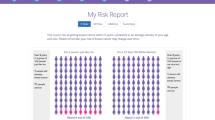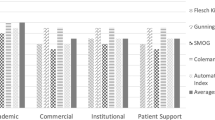Abstract
Electronic mail (e-mail) is a powerful tool that can greatly enhance communication and has numerous potential applications within the medical profession. Physician–patient e-mail communication volume is increasing, but little research has addressed patient interests and concerns about this now commonplace technology. The goals of this study were to review the available literature regarding physician–patient e-mail practices, evaluate patient interest, assess patient perspectives about how e-mail communication might facilitate medical treatment and advice, and determine areas of patient concern regarding e-mail communication with their physicians. To this end, a population of cancer patients was sent a written survey designed to assess their access to e-mail and attitudes about physician–patient e-mail communication. We found that patients favored e-mail for increased convenience, efficiency, and timeliness about general health problems, while it was not favored for urgent matters.
This is a preview of subscription content, access via your institution
Access options
Subscribe to this journal
Receive 4 print issues and online access
$259.00 per year
only $64.75 per issue
Buy this article
- Purchase on Springer Link
- Instant access to full article PDF
Prices may be subject to local taxes which are calculated during checkout


Similar content being viewed by others
References
Kane B, Sands D . Guidelines for the clinical use of electronic mail with patients. J Am Med Inf Assoc 1998; 5: 104–111.
Kleiner K, Akers R, Burke B, Werner E . Parent and physician attitudes regarding electronic communication in pediatric practices. Pediatrics 2002; 109: 740–744.
Fridsma D, Ford P, Altman R . A survey of patient access to electronic mail: attitudes, barriers, and opportunities. Proc Annu Symp Comput Appl Med Care 1994, 15–19.
Mandl K, Kohane I, Brandt A . Electronic patient–physician communication: Problems and promise. Ann Int Med 1998; 129: 495–500.
Bitter J . E-mail in medical practice: legal and ethical concerns. QRC Advisor 2000; 16: 1–8.
Spielberg A . On call and online: sociohistorical, legal, and ethical implications of e-mail for the patient–physician relationship. JAMA 1998; 280: 1353–1359.
Hoffman A . Take 2, and e-mail me in the morning: doctors consult patients electronically. New York Times-Cyber Times; June 3, 1997.
Allert S, Adelhard K, Boettcher F, Schweiberer L . Communication in plastic surgery by means of e-mail: experiences and recommendations for clinical use. Plastic & Reconst Surg 2000; 106: 660–664.
Neinstein L . Utilization of electronic communication (E-mail) with patients at university and college health centers. J Adolesc Health 2000; 27: 6–11.
Ferguson T . Health care in cyberspace: patients lead the revolution. Futurist 1997; 31: 29.
Neill R, Mainous A, Clark J, Hagen M . The utility of electronic mail as a medium for patient-physician communication. Arch Fam Med 1994; 3: 268–271.
Prady S, Norris D, Lester J, Hoch D . Expanding the guidelines for electronic communication with patients: application to a specific tool. J Am Med Inf Assoc 2001; 8: 344–348.
Albert T . Take care with patient e-mail policies. American Medical News (http://www.amednews.com/2001/prsc0122), January 22, 2001.
Rivest R, Shamir A, Adleman L . A method for obtaining digital signatures and public-key cryptosystems. Commun Assoc Comput Mach 1978; 21: 120–126.
Andreae M . Confidentiality in medical telecommunication. The Lancet 1996; 347: 487–488.
Computer Industry Almanac Inc. USA tops 160M Internet Users. http://www.c-i-a.com/pr1202.htm.
Author information
Authors and Affiliations
Corresponding author
Additional information
This work was presented at the ASTRO 2002 Annual Meeting.
This work was supported in part by P30 CA 56036-03 (NCI).
Rights and permissions
About this article
Cite this article
Katzen, C., Solan, M. & Dicker, A. E-mail and oncology: a survey of radiation oncology patients and their attitudes to a new generation of health communication. Prostate Cancer Prostatic Dis 8, 189–193 (2005). https://doi.org/10.1038/sj.pcan.4500797
Received:
Revised:
Accepted:
Published:
Issue Date:
DOI: https://doi.org/10.1038/sj.pcan.4500797
Keywords
This article is cited by
-
Twenty-first Century Bedside Manner: Exploring Patient-Centered Communication in Secure Messaging with Cancer Patients
Journal of Cancer Education (2021)
-
The role of Internet resources in clinical oncology: promises and challenges
Nature Reviews Clinical Oncology (2016)
-
Health-related Internet use among cancer survivors: data from the Health Information National Trends Survey, 2003–2008
Journal of Cancer Survivorship (2011)
-
Patients with cancer and e-mail: implications for clinical communication
Supportive Care in Cancer (2009)



